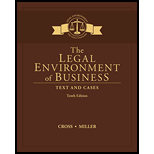
Case summary: Company E sells franchises in a -home-health-care. The person C, the person R, and the person M entered into an agreement of franchise with the company E. The agreement mentioned that if any franchisee fails to follow the terms of the agreement then it would result in an irreparable loss to the franchisor, entitling it to be an injunction. M gave up his franchise, returned every item of trademark of E and quit their operation in the franchised location. M gave back the phone number to the franchisor and informed their clients about their disassociation. M continued to engage in a business line with the name W.
To discuss: The entitlement of E to an injunction against M and their new company.
Want to see the full answer?
Check out a sample textbook solution
Chapter 16 Solutions
The Legal Environment of Business: Text and Cases (MindTap Course List)
- Wiener Haus #82 has been underperforming for a few years. The franchisee (owner of Haus #82) is frustrated and files a claim against the franchisor for breach. The franchisee claims that the agreement he signed contained a statement at the start of the agreement detailing that the business model the franchisor developed was "proven effective and profitable." On these facts, does the franchisee have a winning breach of contract claim against the franchisor? O No, the contract formed was a voidable contract. Thus, the franchisor is void of responsibility if the business model does not produce profit for the franchisee. O Yes, the franchisee relied on these statements when deciding to contract and thus the franchisor should be responsible when the business model fails to work for the franchisee. O No, courts have generally held that the type of language relied upon by the franchisee is "prefatory" and does not create a duty on the part of the franchisor. O Yes, the money paid to the…arrow_forwardExplain limited-liability company (LLC).arrow_forwarddescribing a Limited Liability Company (LLC) business that would created. Indicate a specific provisions that would be include in the LLC's Articles of Organization.arrow_forward
- 27. In a business formation, profits and losses are "passed through" the business to each member: A. Public corporation B. Private corporation C. Sole proprietorship D. General partnership E. Limited liability corporation 28. A is a business model that involves one business owner licensing trademarks and methods to an independent entrepreneur for a prescribed period of time:arrow_forwardParker and Phillips incorporated P & P Resorts Inc., a closely held Texas corporation. Parker was president and Phillips served as vice president and director for operations. Parker owned 40% of the stock, while Phillips owned 60%. Both men met with CTA, a group of travel agents from California to discuss special deals for booking groups into the resorts. After the first meeting, all contracts with CTA were made by Phillips, who learned that there was a good chance that CTA would award the contract to P&P Resorts. Phillips incorporated Travel Brokers and was its sole owner. Phillips used P& P Resort’s time to work on proposals for Travel Brokers and managed to keep negotiations with CTA a secret from Parker. When Parker discovered Phillip’s actions, he filed suit against him for wrongfully taking a corporate opportunity from P &P Resorts. Phillips claimed that he did not take a corporate opportunity because Travel Brokers did not have the financial ability to…arrow_forwardIf within 60 days from the approval of corporation action by stockholders, the dissenting stockholder and the corporation cannot agree on the fair value of the shares, who shall determine the price of shares? * Three disinterested persons, one named by the stockholder, another named by the corporation and the third chosen by the two whose decision by majority is binding and final The dissenting shareholder The Securities and Exchange commission The Commercial Courtarrow_forward
- Subject: acountingarrow_forwardXavier and Ciara form a corporation to provide cleaning services to local businesses. After two years of trying to make a go of the business, the profits they had hoped for are just not there. Xavier and Ciara decide to dissolve the corporation and go their separate ways. To terminate the corporate entity, Xavier and Ciara must: Choose three. -Pay the corporate debts and distribute remaining funds to themselves -File articles of dissolution with the state -Seek a court order for dissolutoin -Vote to terminatearrow_forwardMuller, a shareholder of SCM, brought an action against SCM over his unsuccessful negotiations to purchase some of SCM’s assets overseas. He then formed a shareholder committee to challenge the position of SCM’s management in that suit. To conduct a proxy battle for management control at the next election of directors, the committee sought to obtain the list of shareholders who would be eligible to vote. At the time, however, no member of the committee had owned stock in SCM for the six-month period required to gain access to such information. Then Lopez, a former SCM executive and a shareholder for more than one year, joined the committee and demanded to be allowed to inspect the minutes of SCM shareholder proceedings and to gain access to the current shareholder list. His stated reason for making the demand was to solicit proxies in support of those the committee had nominated for positions as directors. Lopez brought this action after SCM rejected this demand. Will Lopez succeed?arrow_forward
- Sayre learned that Adams, Boone, and Chase were planning to form a corporation for the purpose of manufacturing and marketing a line of novelties to wholesale outlets. Sayre had patented a self-locking gas tank cap but lacked the financial backing to market it profitably. He negotiated with Adams, Boone, and Chase, who agreed to purchase the patent rights for $5,000 in cash and two hundred shares of $100 par value preferred stock in a corporation to be formed. The corporation was formed and Sayre’s stock issued to him, but the corporation has refused to make the cash payment. It has also refused to declare dividends, although the business has been very profitable because of Sayre’s patent and has a substantial earned surplus with a large cash balance on hand. It is selling the remainder of the originally authorized issue of preferred shares, ignoring Sayre’s demand to purchase a proportionate number of these shares. What are Sayre’s rights, if any?arrow_forwardMerrill Lynch employed Post and Maney as account executives. Both men elected to be paid a salary and to participate in the firm’s pension and profit-sharing plans rather than take a straight commission. Thirteen years later, Merrill Lynch terminated the employment of both Post and Maney. Both men began working for a competitor of Merrill Lynch. Merrill Lynch then informed them that all of their rights in the companyfunded pension plan had been forfeited pursuant to a provision of the plan that permitted forfeiture in the event an employee directly or indirectly competed with the firm. Is Merrill Lynch correct in its assertion? Why or why not?arrow_forwardWhat are the contents of the articles of association? What is Table A? What is meant by a company registered office? What is an objects clause? Explain the nature of a company limited by shares. How can the articles of a company be altered? What is the legal effect of a company's constitution?arrow_forward
 BUSN 11 Introduction to Business Student EditionBusinessISBN:9781337407137Author:KellyPublisher:Cengage Learning
BUSN 11 Introduction to Business Student EditionBusinessISBN:9781337407137Author:KellyPublisher:Cengage Learning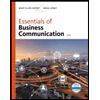 Essentials of Business Communication (MindTap Cou...BusinessISBN:9781337386494Author:Mary Ellen Guffey, Dana LoewyPublisher:Cengage Learning
Essentials of Business Communication (MindTap Cou...BusinessISBN:9781337386494Author:Mary Ellen Guffey, Dana LoewyPublisher:Cengage Learning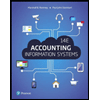 Accounting Information Systems (14th Edition)BusinessISBN:9780134474021Author:Marshall B. Romney, Paul J. SteinbartPublisher:PEARSON
Accounting Information Systems (14th Edition)BusinessISBN:9780134474021Author:Marshall B. Romney, Paul J. SteinbartPublisher:PEARSON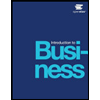
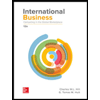 International Business: Competing in the Global M...BusinessISBN:9781259929441Author:Charles W. L. Hill Dr, G. Tomas M. HultPublisher:McGraw-Hill Education
International Business: Competing in the Global M...BusinessISBN:9781259929441Author:Charles W. L. Hill Dr, G. Tomas M. HultPublisher:McGraw-Hill Education





